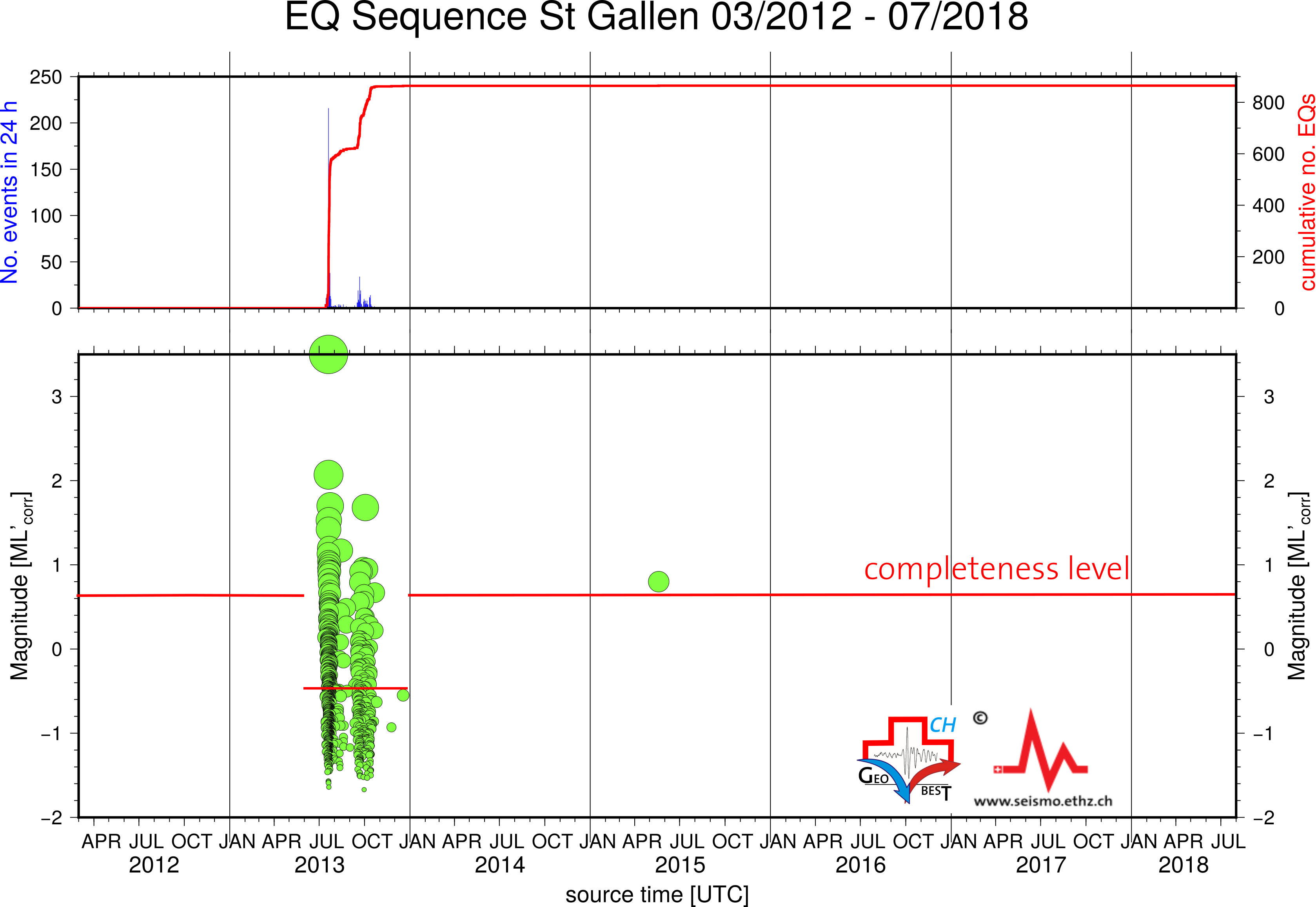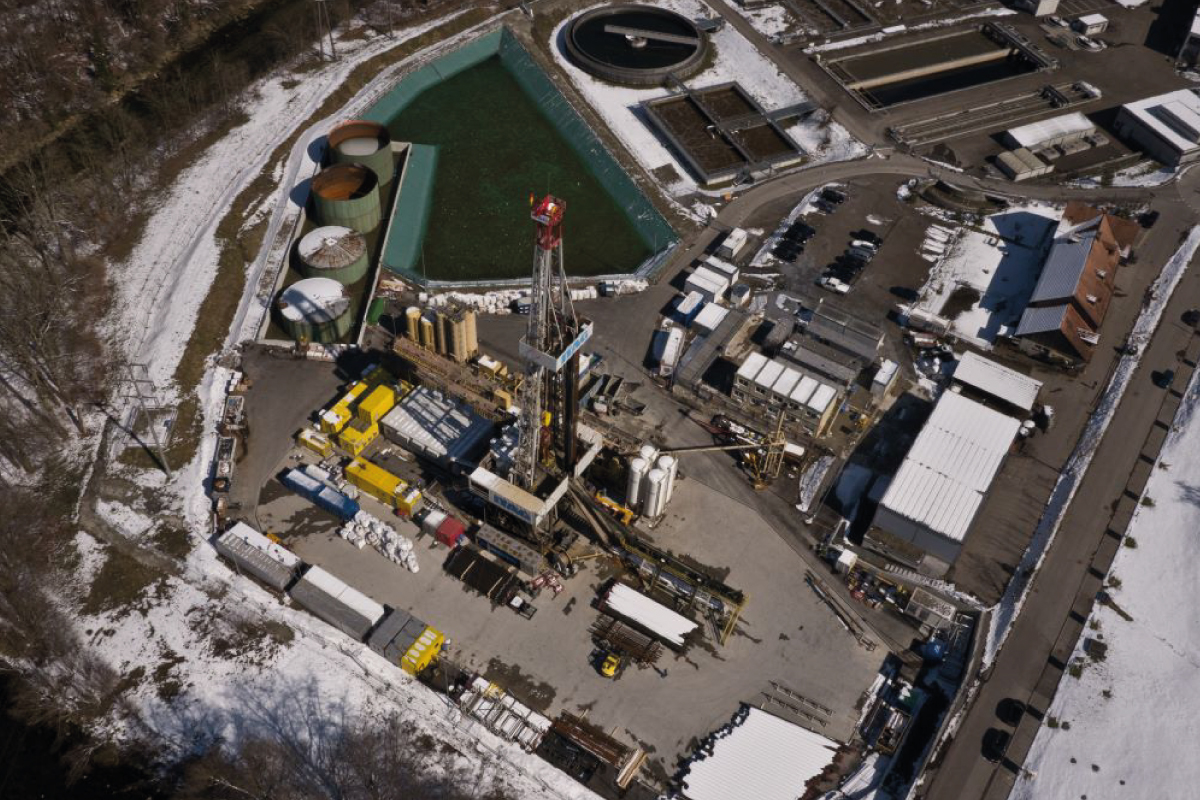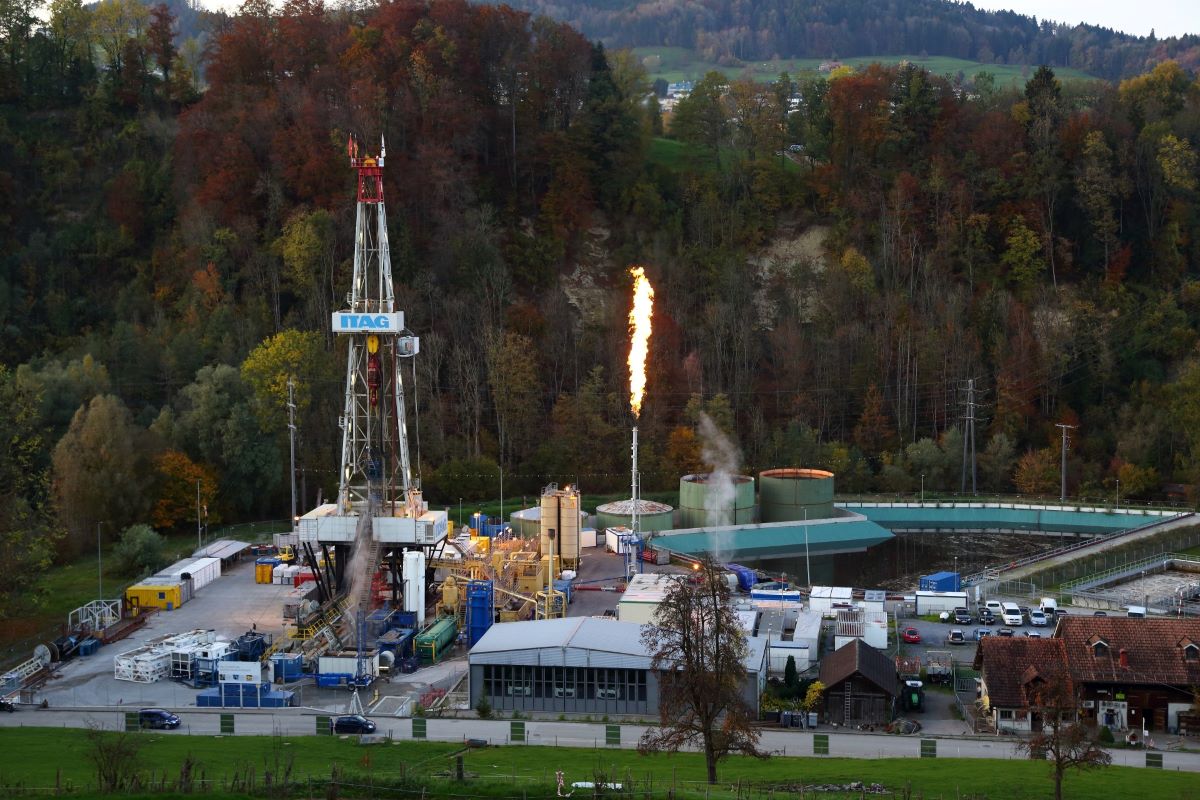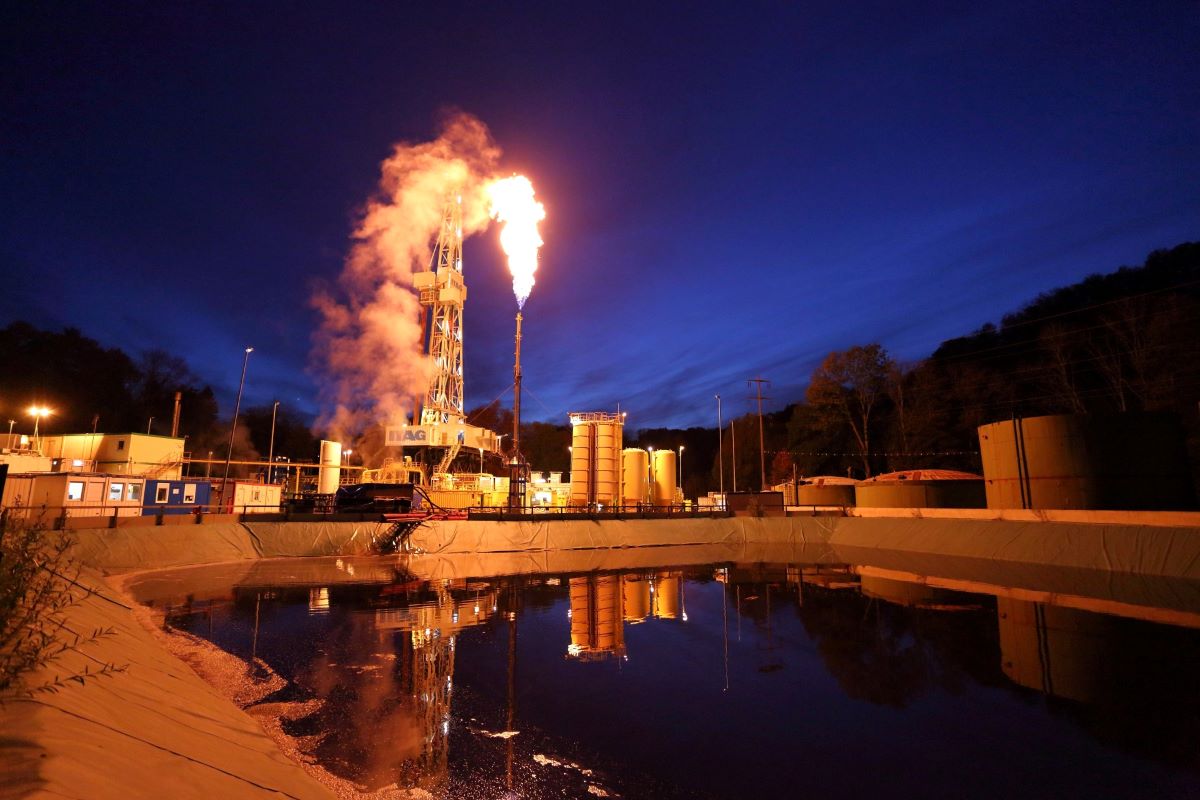Project description geothermal energy St. Gallen
As part of the GeoBest research project, the Swiss Seismological Service (SED) is overseeing the city of St. Gallen's geothermal energy project. To this end, the SED teamed up with St. Gallen's municipal utilities to set up six new earthquake monitoring stations in the St. Gallen region. The aim of this monitoring is to detect and any minor seismic activity – so-called microearthquakes – near deep boreholes and find out whether or not they are linked to the geothermal power project or were naturally caused. Furthermore, the project gathers important basic data that provides a clearer understanding of deep geothermics. These data should serve as an invaluable source of information for guaranteeing safe planning for geothermal projects by cantonal authorities and project organisers.
The geothermal energy project in St. Gallen in 2013 aimed to make use of naturally circulating water in existing aquifers at a depth of over 4,000 meters for power production. Comparable projects in southern Germany, which involved drilling into the same layers of rock, had been implemented with success.
Existing fault zones in the subsoil offer optimal conditions for hydrothermal systems, as they offer greater permeability. A suitable location for drilling work was identified in Sittertobel with the aid of a seismic 3-D model. The decision was made in favor of a fault zone whose seismic potential was rated as low by the operators and by the St. Gallen public utilities company (Sankt Galler Stadtwerke) based on past seismic activity.
The SED installed a seismic network with seven stations – six on the surface and one in a borehole – in advance of the drilling work for the purpose of seismic monitoring.
The drilling work began at the start of 2013, and the first test and simulation measures were implemented in the summer of the same year. The number and intensity of the microearthquakes induced were as expected and not noticeable to the public. On the evening of July 19, 2013, seismic activity began to increase; the earthquakes became stronger and more frequent. Following an initial event with a magnitude of 1.6, the traffic light system as a central precautionary element issued a yellow alarm, indicating that pumping work should be terminated immediately. Because the counterpressure was too high due to rising gas in the borehole and presented a potential risk for the system as a whole, however, the pumping work was continued. Seismicity continued to increase, reaching a climax on the morning of July 20, 2013, with a noticeable earthquake with a magnitude of 3.5. This corresponded to an intensity of IV. While the earthquake was noticed extensively by the public, very few reports of damage were received in comparison with Basel.
Earthquake activity then declined constantly as expected, but increased again in connection with preparations for the production tests from September 16, 2013. During this period, a total of 232 microearthquakes were recorded. The strongest took place on October 2, 2013, and had a magnitude of 2.0. With the start of the production tests on October 15, 2013, during which gas and water were extracted from the subsoil, earthquake activity decreased considerably. Since that time, the SED has recorded only four very weak events. These microearthquakes may have been aftershocks from the earthquake on October 2, 2013, and are thus not necessarily attributable to the production test.
According to the latest findings, the earthquakes triggered are directly linked to the steps taken to tackle the gas-water leak observed on July 19, 2013. Increased rates of earthquakes occur above all when pumping fluids into the subsoil (injection). Pumping fluids out of the subsoil (production), on the other hand, generally results in a decrease of the earthquake rate, provided there is no substantial solidification of sediments (compaction). What is more, if the fault zone reacts sensitively to changes in pore pressure, this is an indication that the zone is subject to critical tectonic tension, and that earthquakes are likely to occur.
The St. Gallen public utilities company concluded the first phase of its geothermal energy project following the production tests, and the project was terminated permanently in spring 2014 following further investigation. The St. Gallen public utilities company explained the reason for the termination of the project as a “combination of insufficient water availability, increased earthquake risk and unexpected gas flow in the layers of rock accessed”.
A detailed chronology of seismicity in connection with the geothermal energy project in St. Gallen can be found here.
Information on real-time monitoring of induced seismicity in St. Gallen can be found here.
Induced seismicity at the geothermal project St. Gallen detected by a manual post-analysis performed by the SED. The red line in the lower panel indicates the completeness level of the catalogue, above which the probability of missing an occurring earthquake is very small. The post analysis detected more than 800 microearthquakes (top panel). This analysis strongly improved the completeness level of the catalog in the second half of 2013 to magnitude ML-0.4. The automatic real-time analysis of the SED reaches a completeness of magnitude ML0.7



